The AMD Radeon RX Vega 64 & RX Vega 56 Review: Vega Burning Bright
by Ryan Smith & Nate Oh on August 14, 2017 9:00 AM ESTDawn of War III
A Dawn of War game finally returns to our benchmark suite, with its predecessor last appearing in 2010. With Dawn of War III, Relic offers a demanding RTS with a built-in benchmark; however, the benchmark is still bugged, something noticed by Ian, as well as by other publications. The built-in benchmark for Dawn of War III collects frametime data for the loading screen before and black screen after the benchmark scene, rendering the calculated averages and minimum/maximums useless. While we used the benchmark scene for consistency, we used OCAT to collect the performance data instead. Ultra settings were used without alterations.
A note on the 1080p results: further testing revealed that Dawn of War III at 1080p was rather CPU-bound on our testbed, resulting in anomalous performance. Due to the extreme time constraints, we discovered and determined this very late in the process. For the sake of transparency, the graphs will remain as they were at the time of the original posting.
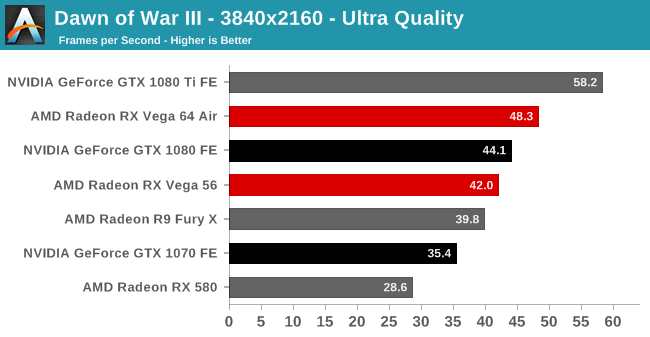
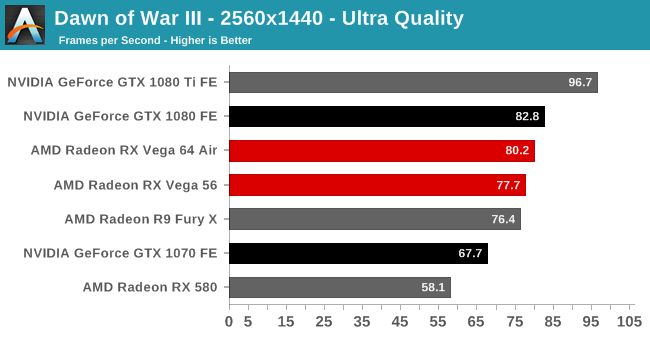
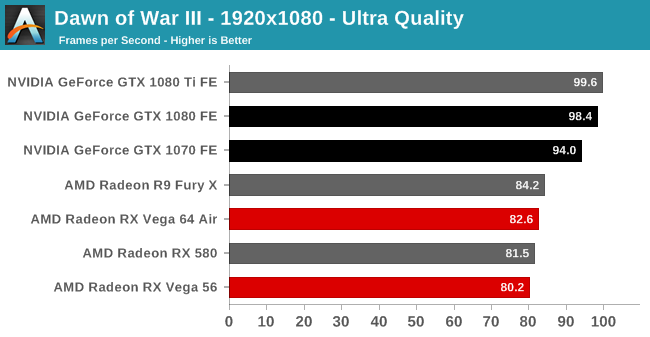

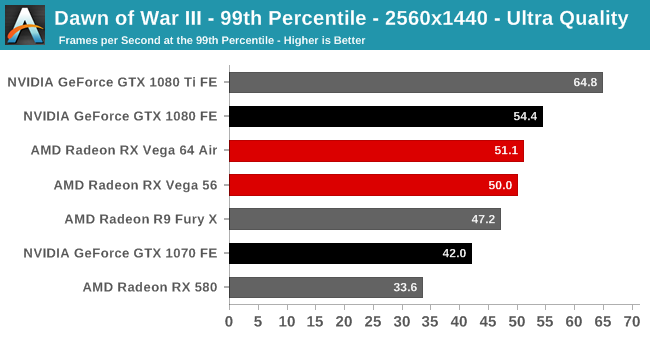
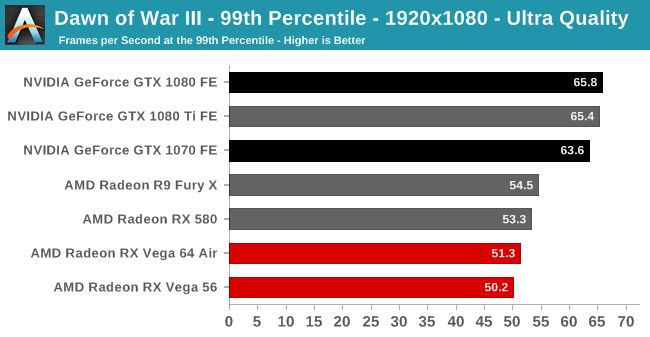










213 Comments
View All Comments
FourEyedGeek - Tuesday, August 22, 2017 - link
Your reflexes aren't fast enoughAldaris - Monday, August 14, 2017 - link
NV fanboy alert.Tell me, in what world did those results suggest to you it's slower?
Manch - Tuesday, August 15, 2017 - link
ddriver calls them an Intel/Nvidia shill.Vladx calls them an AMD/Apple shill
I think it was fair and balanced :D
sor - Monday, August 14, 2017 - link
Performance wise it actually seems pretty good. People were worried it wouldn't even be able to compete with a 1080, but in many cases it slots between the 1080 and the Ti. The killer though is that power consumption. Burning 100+ more watts is insane. Otherwise, seems like it was a nice, competitive card.blublub - Monday, August 14, 2017 - link
This excessive power draw is, and many ppl forget that, node related.It's the same as with Ryzen:
GloFo's 14nm is low power plus! Meaning it's very power efficient up to a certain frequency but once it surpasses it it drinks electricity like an elephant in steroids.
It can be seen with Ryzen and Polaris, drop frequency and voltage and power goes down more than proportionally.
AMD just didn't have enough money and was bound to GloFo so they couldn't take out different GPU sizes and on a different process
FreckledTrout - Monday, August 14, 2017 - link
Yeah but they do have a shining light in that IBM bought 7nm process, its high frequency should really help both AMD's GPU and CPU's a lot.Manch - Tuesday, August 15, 2017 - link
You can't drink electricity. I get your point though.Make like a tree and get the out of here!
Yojimbo - Monday, August 14, 2017 - link
It'll be interesting to see how much game developers take advantage of double rate FP16. Maybe there are some bottlenecks that can be alleviated without impacting quality much.beck2050 - Monday, August 14, 2017 - link
Over clocking seems very limited with that power draw. Custom 1080s are often 10 to 15% faster out of the box and still cooler and less power hungry.A bit disappointing.
mapesdhs - Monday, August 14, 2017 - link
I mentioned that elsewhere, in the UK a 1080 with a 1759MHz base is 60 UKP cheaper than a Vega64/Air, and one can get a 1080 Ti for the price of a Vega64/Liquid.